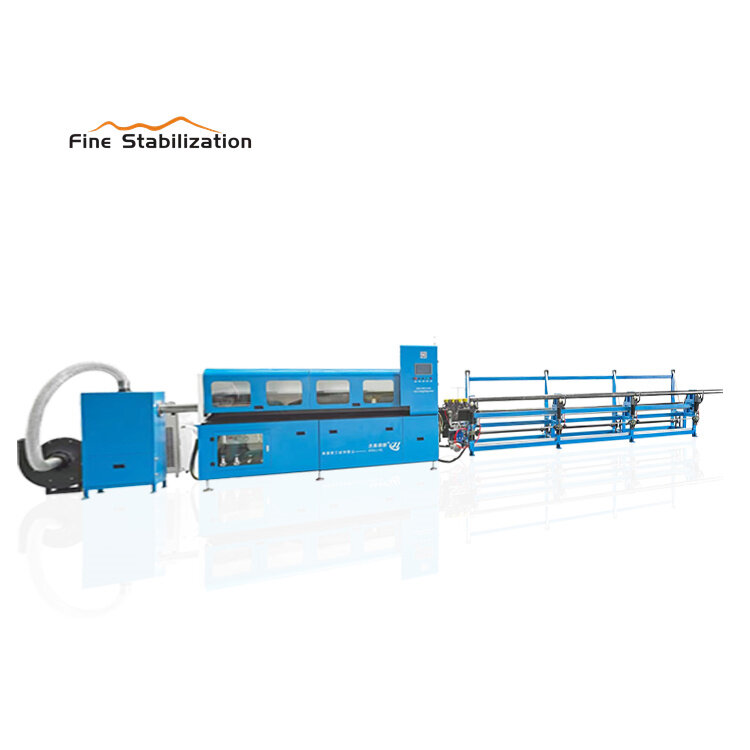Email format error
Email cannot be empty
Email already exists
6-20 characters(letters plus numbers only)
The password is inconsistent
Email format error
Email cannot be empty
Email does not exist
6-20 characters(letters plus numbers only)
The password is inconsistent


The Ultimate Guide for Laser Cutting Machine Importers
I. Introduction
In the dynamic world of manufacturing, precision and efficiency are paramount. Laser cutting machines have emerged as a game-changer, offering unparalleled accuracy and speed. As laser cutting machine importer, tapping into this technology can be a significant step forward. This guide is designed to navigate you through the complexities of importing laser cutting machines, ensuring you make the best decisions for your business's growth and success.
II. Understanding Laser Cutting Technology
Laser cutting is a non-contact process that utilizes a laser to cut materials, resulting in high-quality, dimensionally accurate cuts. The process works by directing the output of a high-power laser through optics.
A. How Laser Cutting Works
The laser beam is focused into a small spot, allowing for a very narrow and clean cut. The heat from the laser causes the material to melt, burn, vaporize, or be blown away by a jet of gas, leaving an edge with a high-quality surface finish.
B. Types of Laser Cutting Machines
CO2 Lasers: Ideal for cutting, engraving, and etching on wood, plastic, glass, and some metals.
Fiber Lasers: Best for processing metals and are known for their speed, efficiency, and low maintenance.
Crystal Lasers: These can cut through both metals and non-metals but are less common due to their higher cost and shorter service life.
C. Advantages of Laser Cutting
Laser cutting machines offer numerous advantages over traditional cutting methods, including higher precision, reduced contamination of the workpiece, and decreased chance of warping the material being cut. They also allow for complex cuts and engraving, which are not possible with conventional methods.
III. Pre-Purchase Considerations for laser cutting machine Importers
Before investing in a laser cutting machine, several factors must be considered to ensure that you select the right equipment for your business needs.
A. Assessing Your Business Needs
Evaluate the types of materials you will be cutting, the thickness of these materials, and your expected production volume. This assessment will guide you in choosing the most suitable laser cutting machine.
B. Determining the Right Type of Laser Cutter
The material you intend to cut will largely dictate the type of laser cutter you should choose. For instance, CO2 lasers are better suited for non-metal materials, while fiber lasers are optimized for metals.
C. Key Features to Look For
Power Output: The machine's power directly affects its ability to cut through different materials and thicknesses.
Cutting Speed and Precision: These are critical for maintaining productivity and meeting tight tolerances.
Software Compatibility: The laser cutter should be compatible with the software you intend to use for design and production.
D. Budgeting for Your Investment
Consider the total cost of ownership, which includes the purchase price, operation costs, maintenance, and potential future upgrades.
IV. The Importing Process
Importing a laser cutting machine is a multi-step process that involves careful planning and attention to detail.
A. Finding Reputable Manufacturers and Suppliers
Conduct thorough research to find manufacturers with a track record of quality and reliability. Attend trade shows, read industry publications, and seek recommendations from industry peers.
B. Navigating International Trade Regulations
Import Duties and Taxes: Understand the import duties and taxes that will apply to your purchase to avoid unexpected costs.
Certifications and Safety Standards: Ensure the machine complies with the safety standards and certifications required in your country.
C. Shipping and Logistics
Choosing a Reliable Freight Forwarder: Partner with a logistics company experienced in handling heavy machinery to ensure a smooth delivery.
D. After-sales Support and Warranty Considerations
Investigate the level of after-sales support provided by the manufacturer, including warranty terms and the availability of spare parts and technical assistance.
V. Installation and Training
Proper installation and comprehensive training are crucial for maximizing the performance and lifespan of your laser cutting machine.
A. Setting Up Your Laser Cutting Machine
Follow the manufacturer's installation guidelines closely or consider hiring a professional service to ensure correct setup.
B. Training Your Team
Ensure that your operators are fully trained on the machine's operation, maintenance, and safety procedures to optimize productivity and minimize risks.
C. Safety Measures and Best Practices
Implement safety protocols, including the use of protective eyewear, proper ventilation, and adherence to operational guidelines to maintain a safe working environment.
VI. Maximizing the Return on Your Investment
To fully benefit from your laser cutting machine, it’s essential to maintain it properly and stay updated on the latest advancements in laser technology.
A. Maintaining Your Laser Cutting Machine
Regular maintenance, such as cleaning lenses and mirrors, checking alignment, and replacing consumables, will keep your machine running efficiently.
B. Troubleshooting Common Issues
Familiarize yourself with common technical issues and their solutions to minimize downtime and maintain continuous production.
C. Exploring Advanced Applications and Materials
Stay informed about new materials and cutting techniques that can expand your business offerings and keep you ahead of the competition.
VII. Conclusion
Importing a laser cutting machine is a significant investment that can revolutionize your manufacturing capabilities. By thoroughly understanding the technology, making informed purchasing decisions, and ensuring proper setup and maintenance, you can maximize the benefits of laser cutting for your business. Embrace this cutting-edge technology to enhance your production quality, increase efficiency, and drive innovation in your industry.

